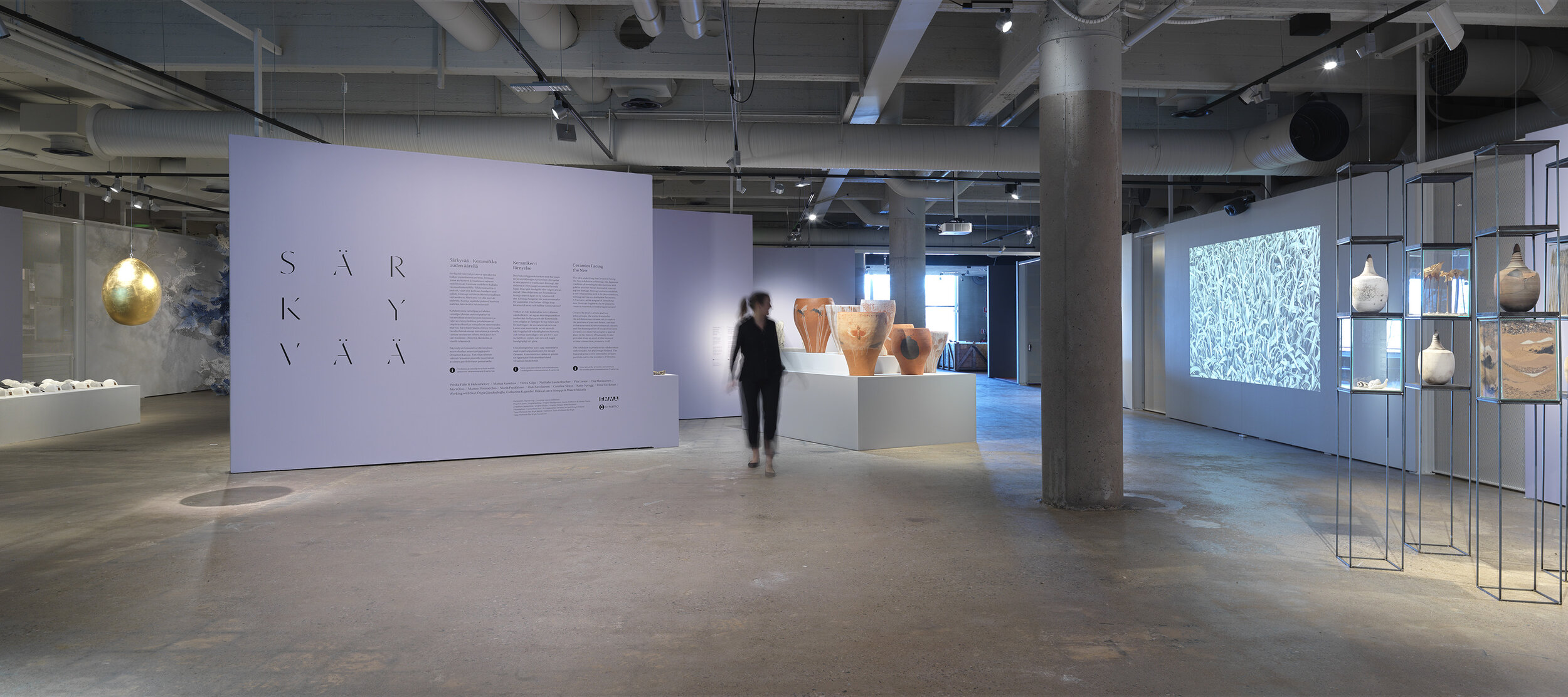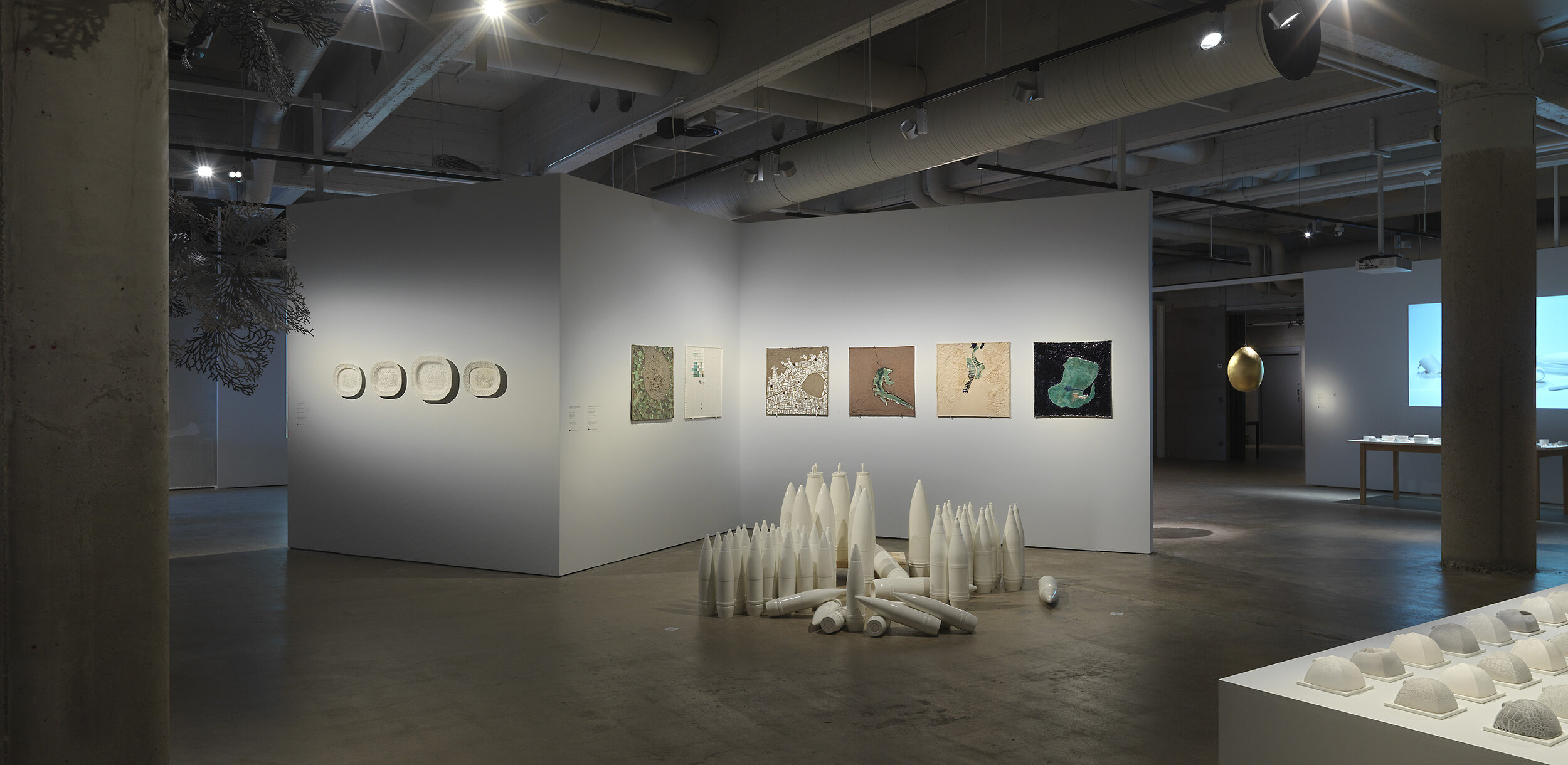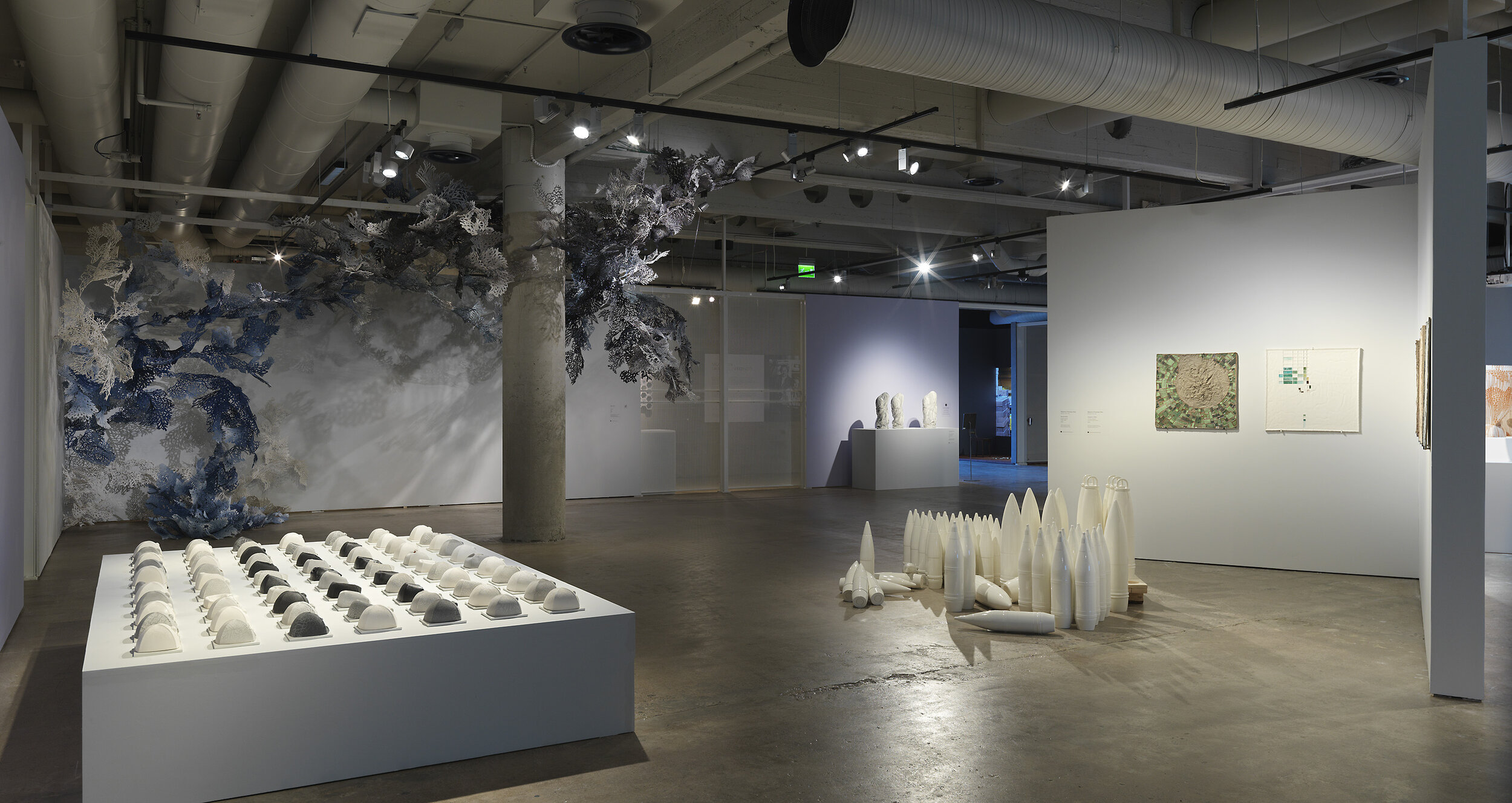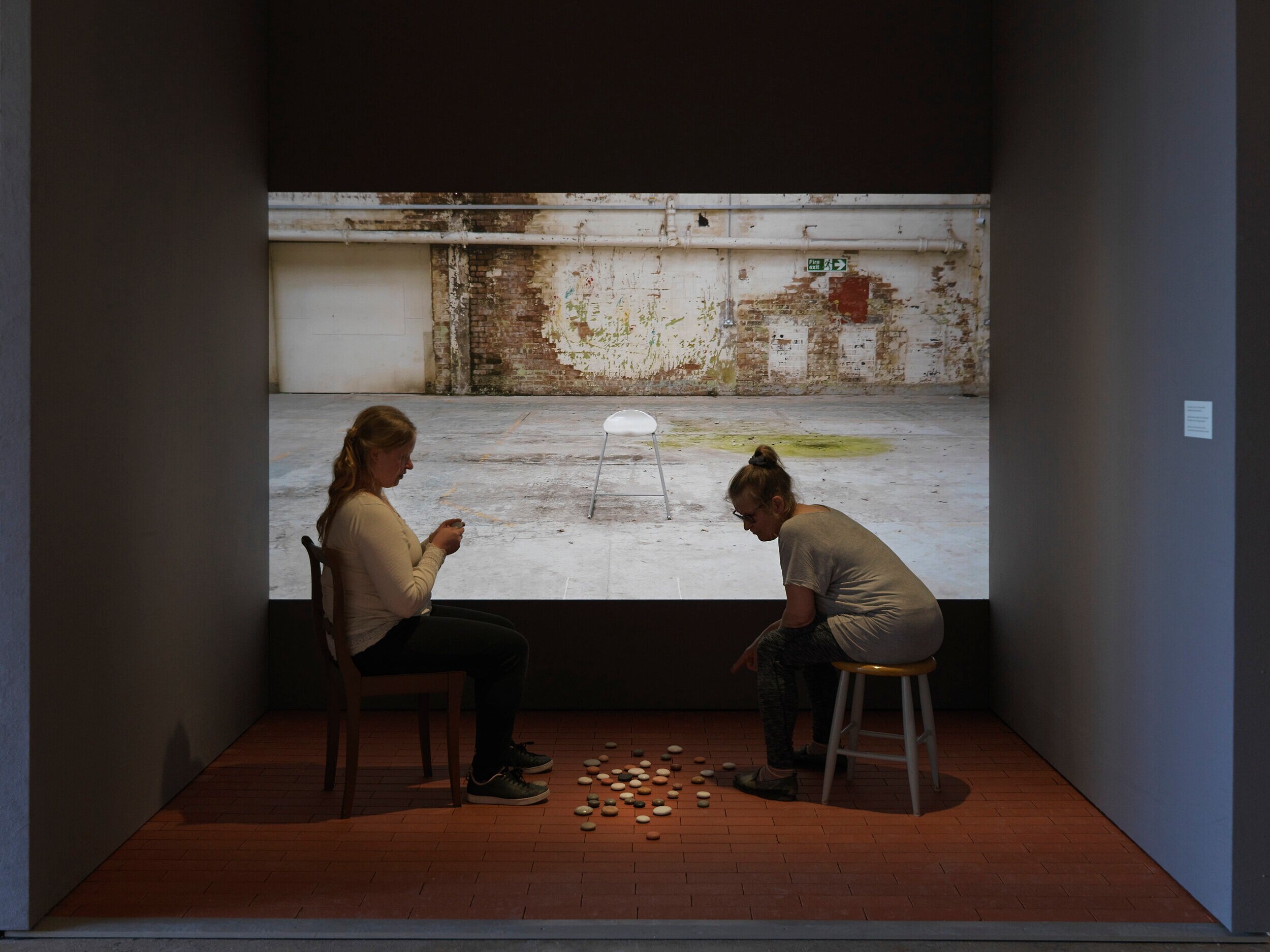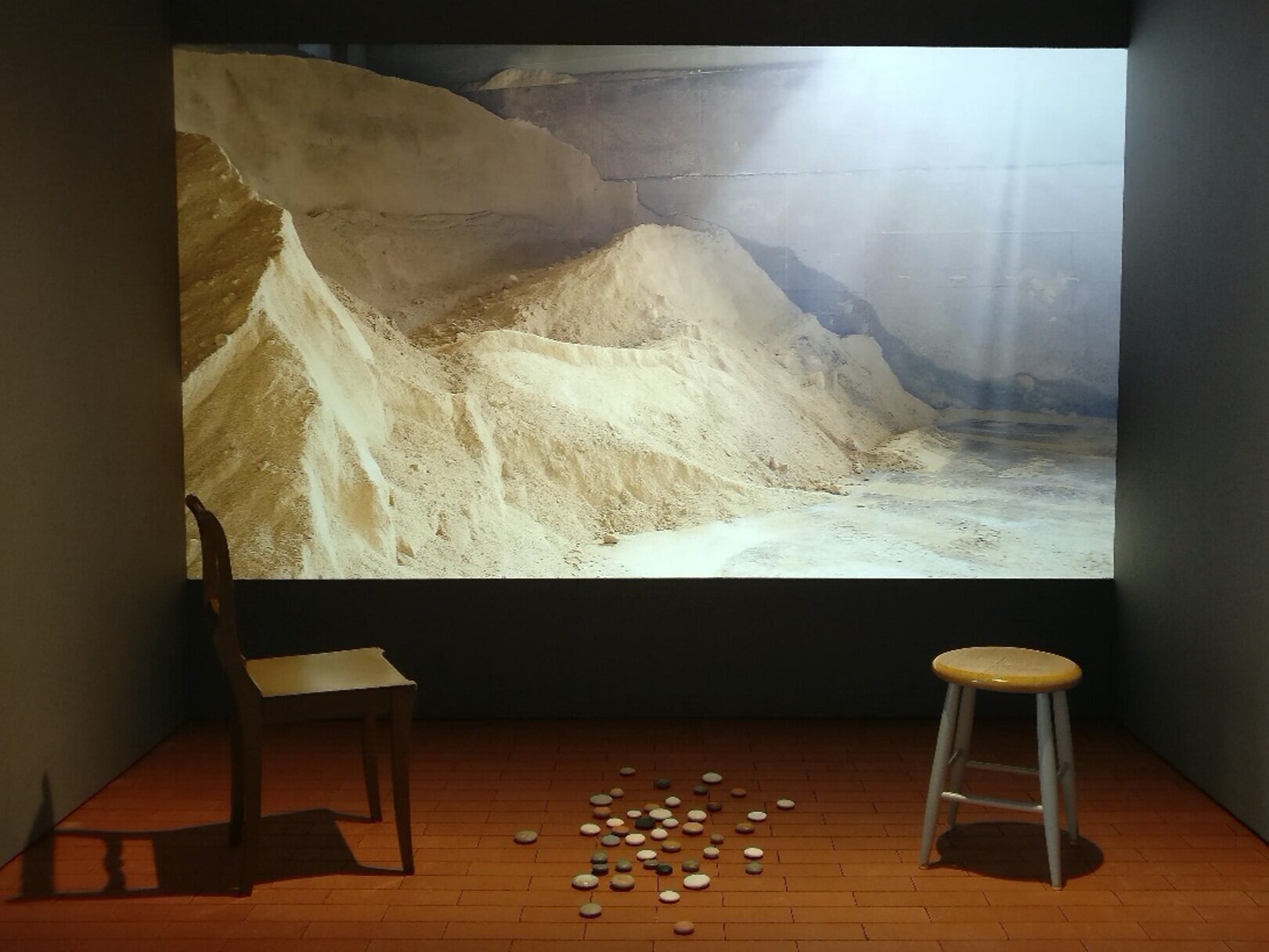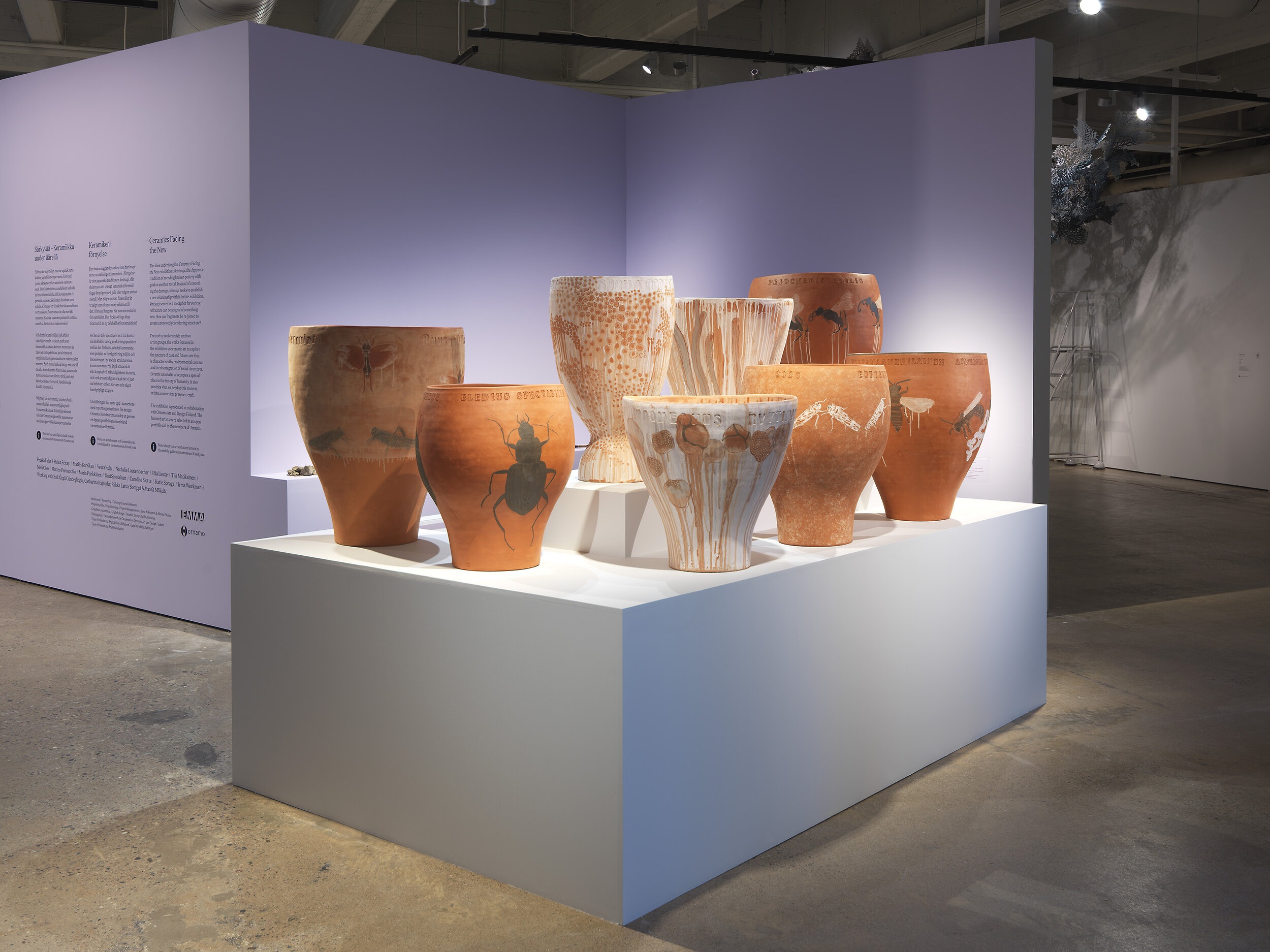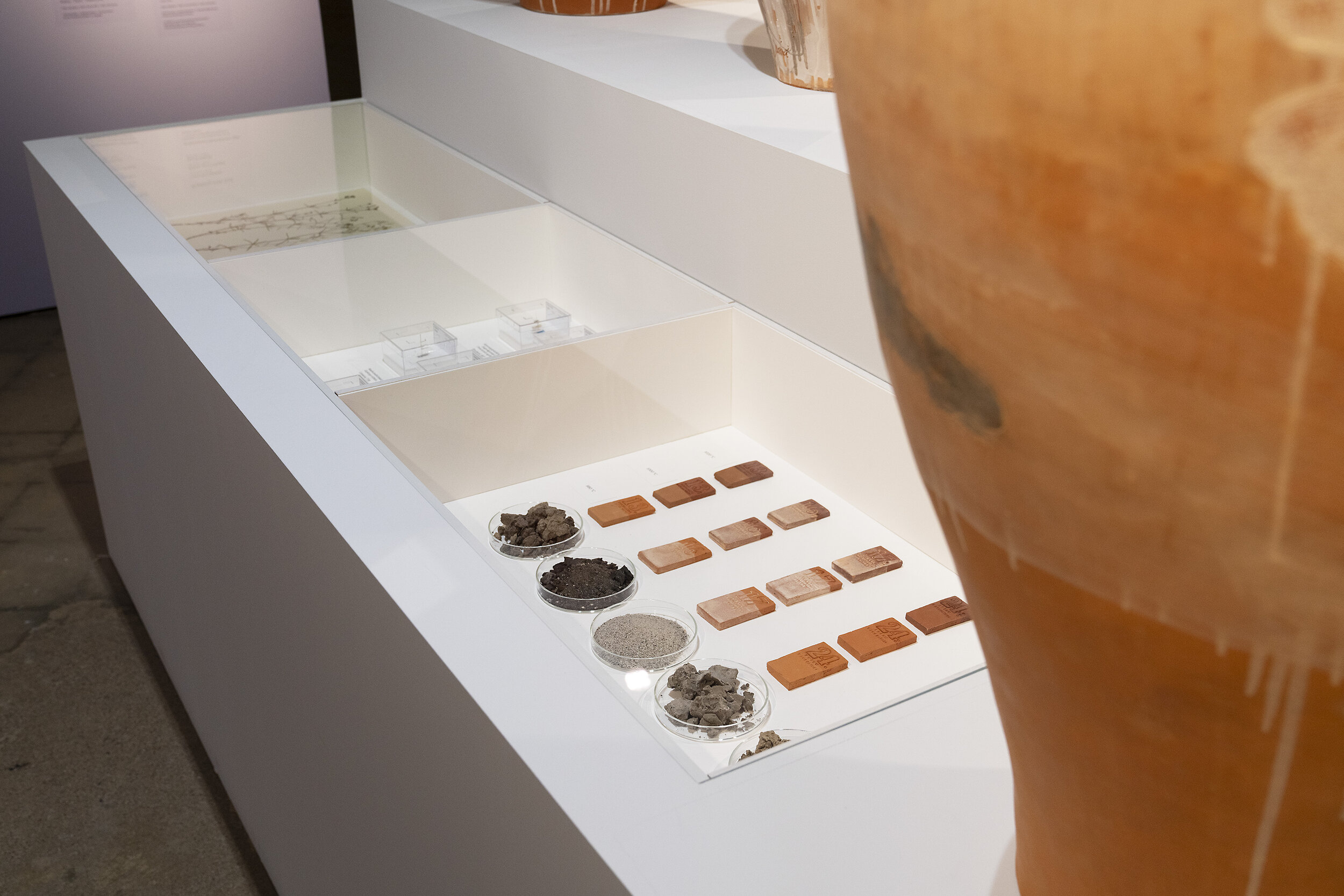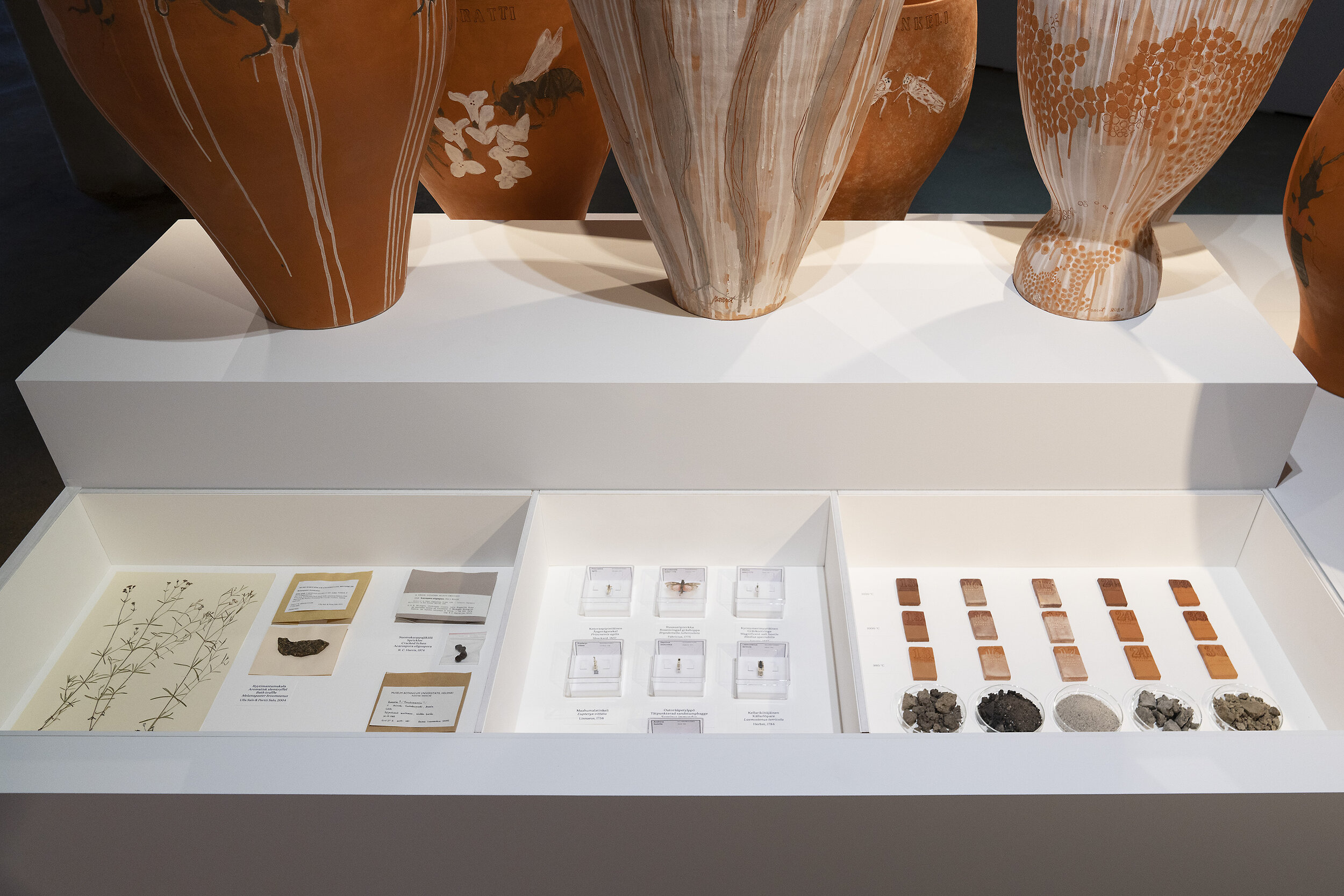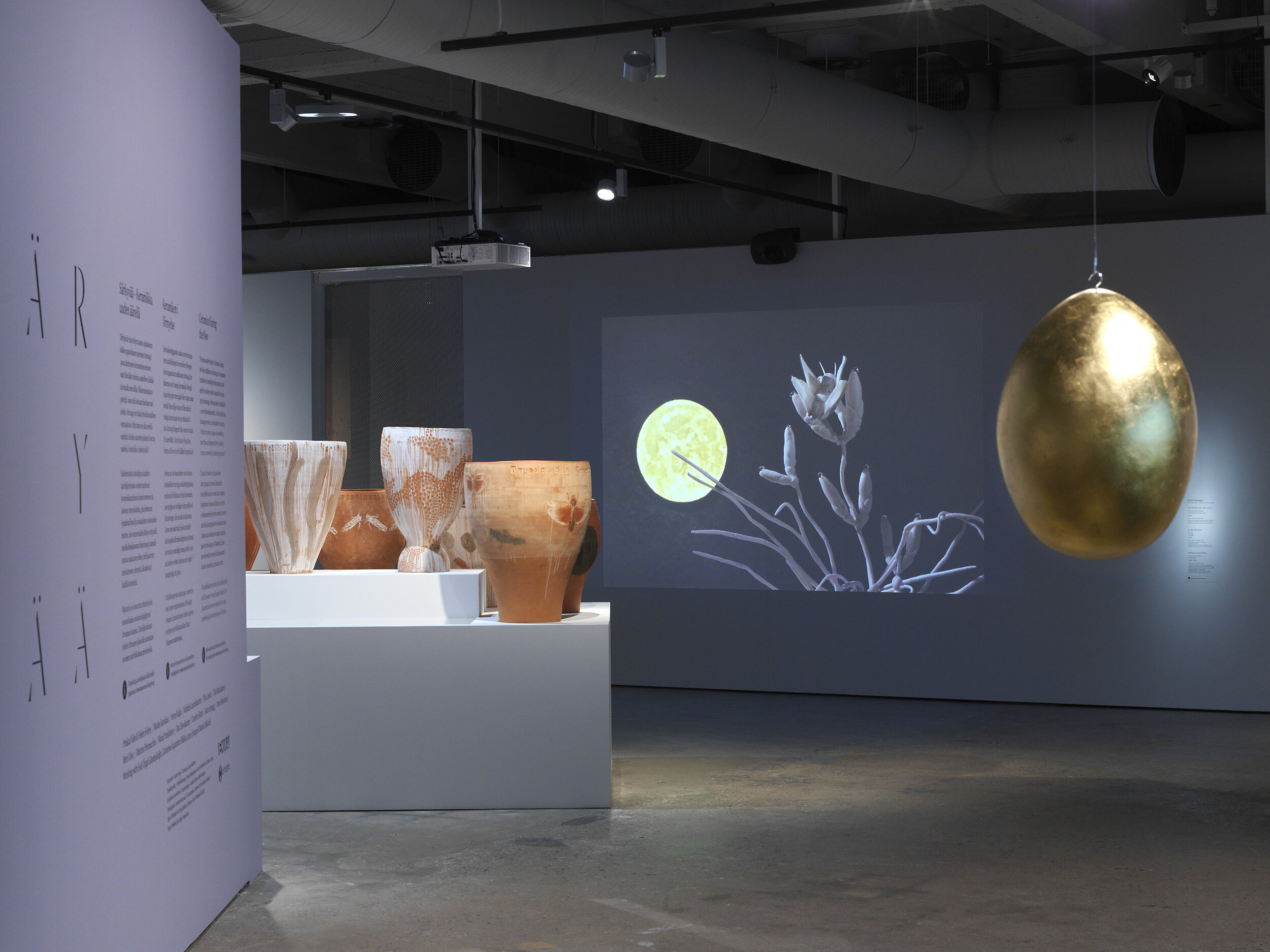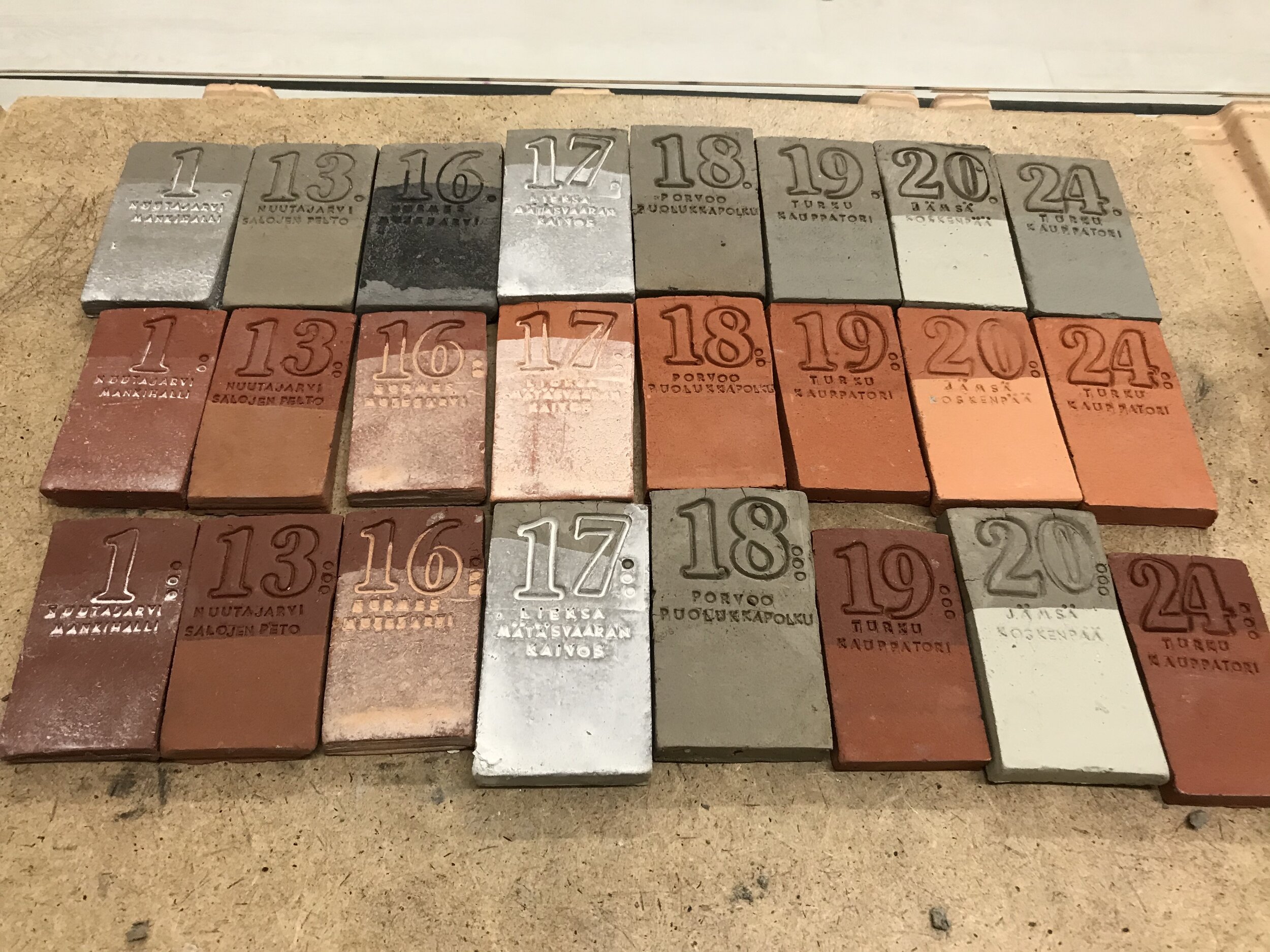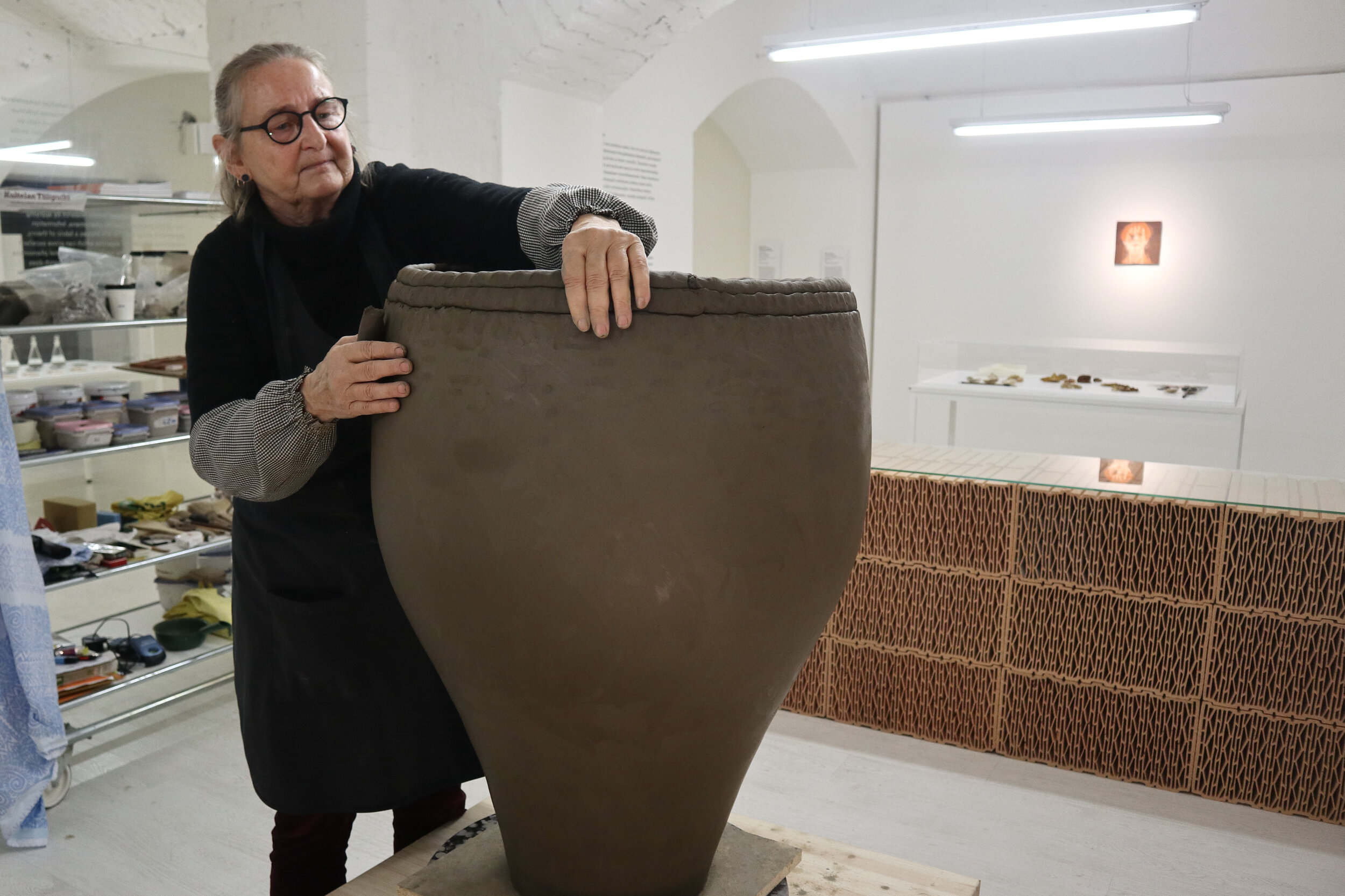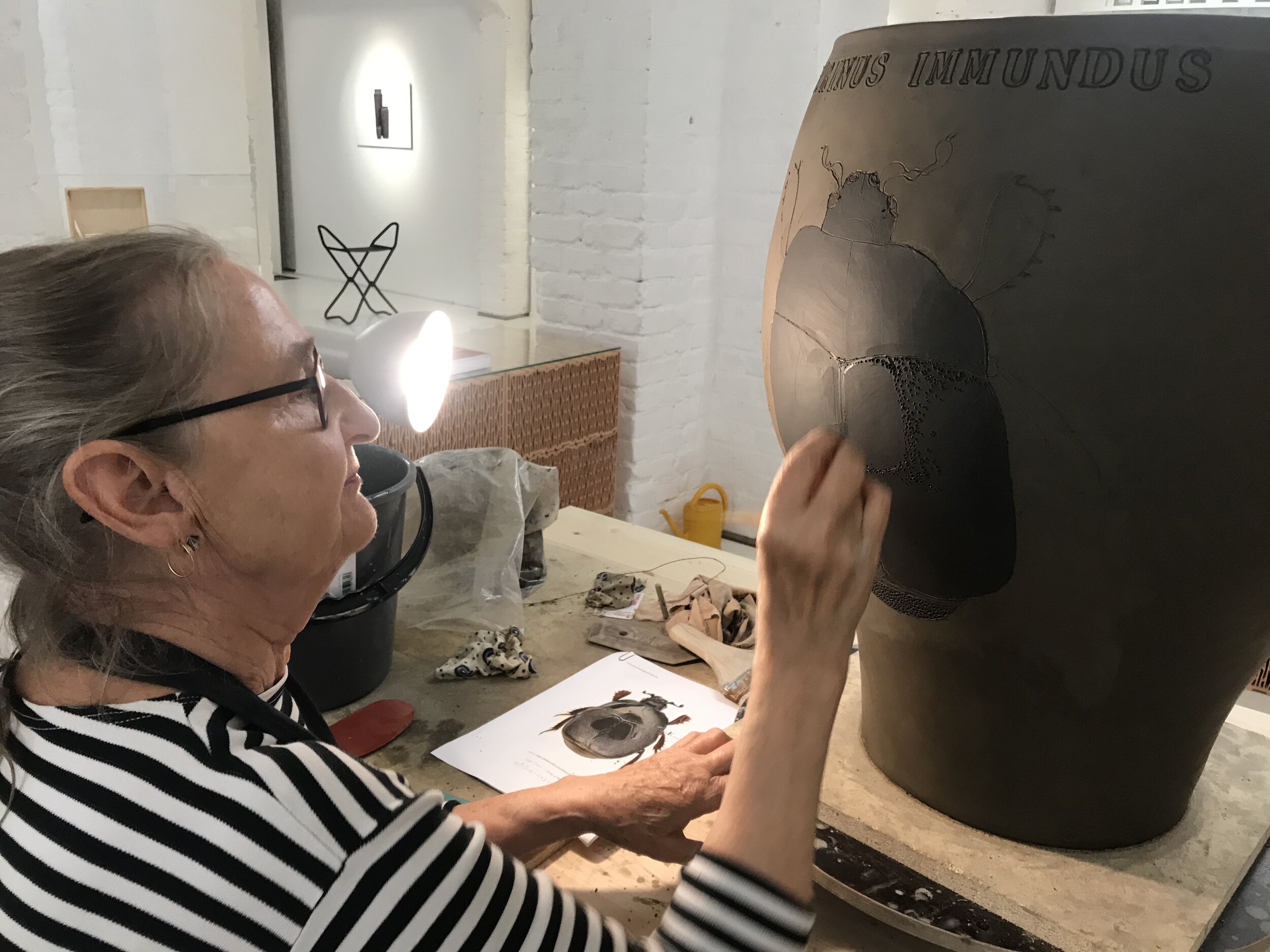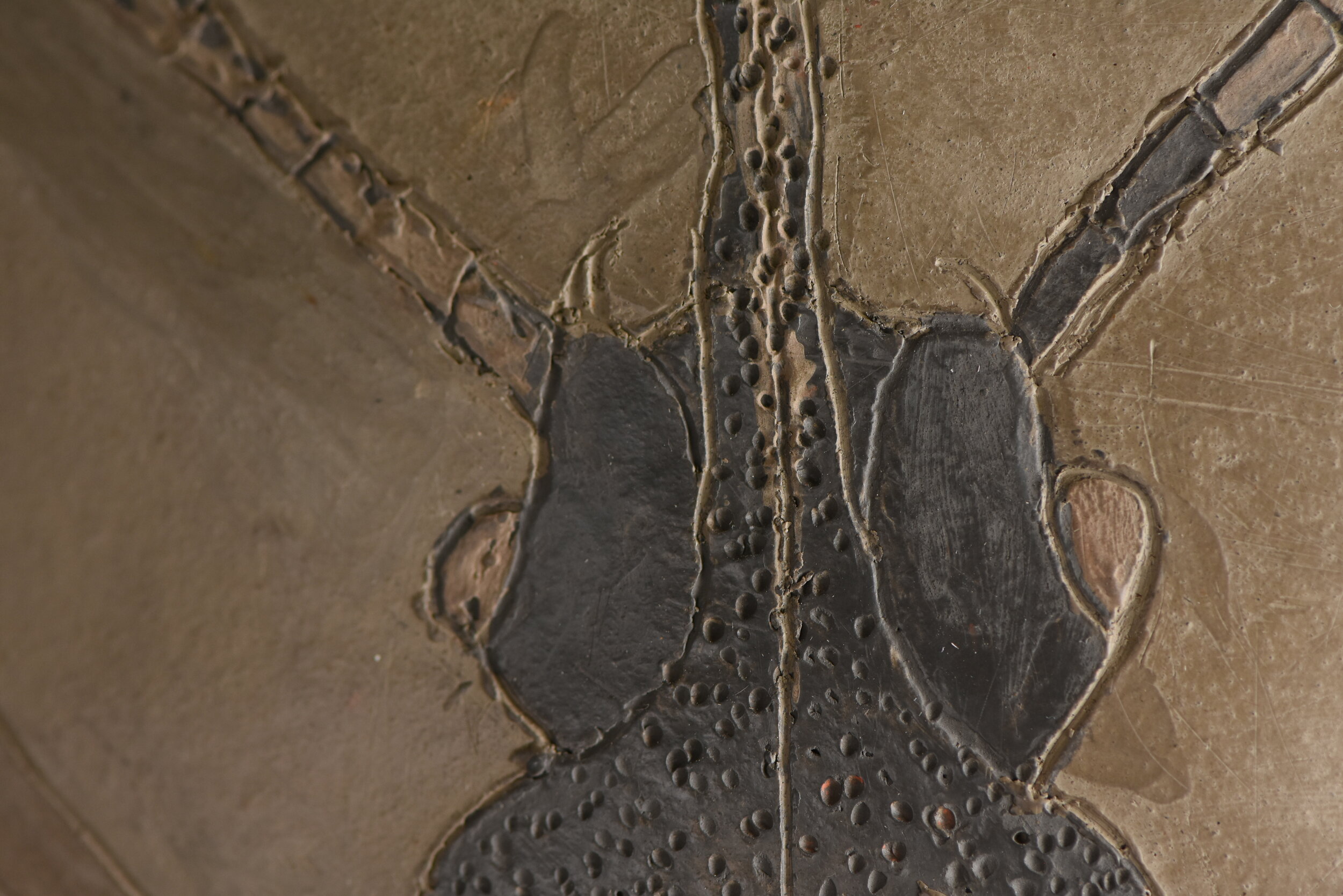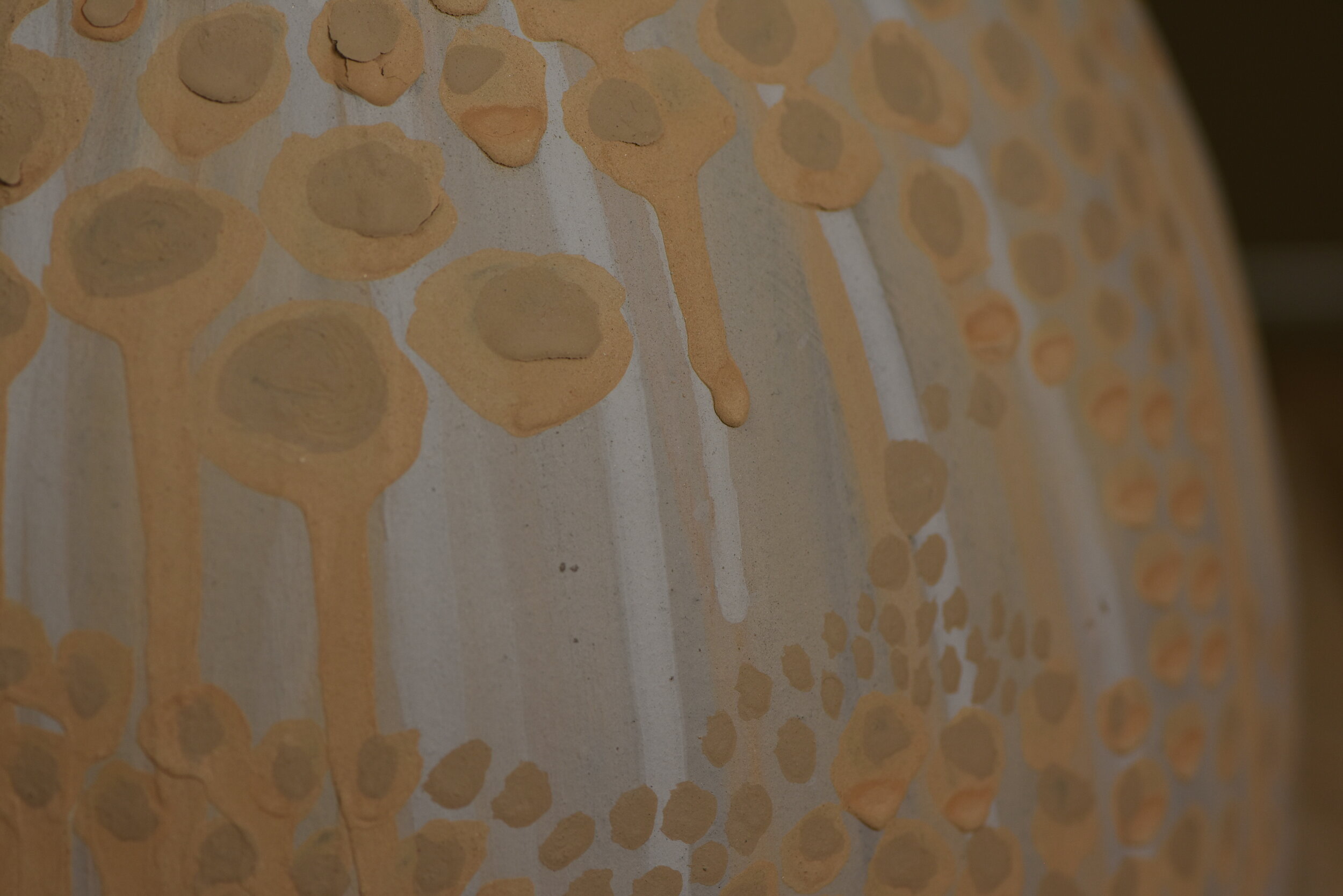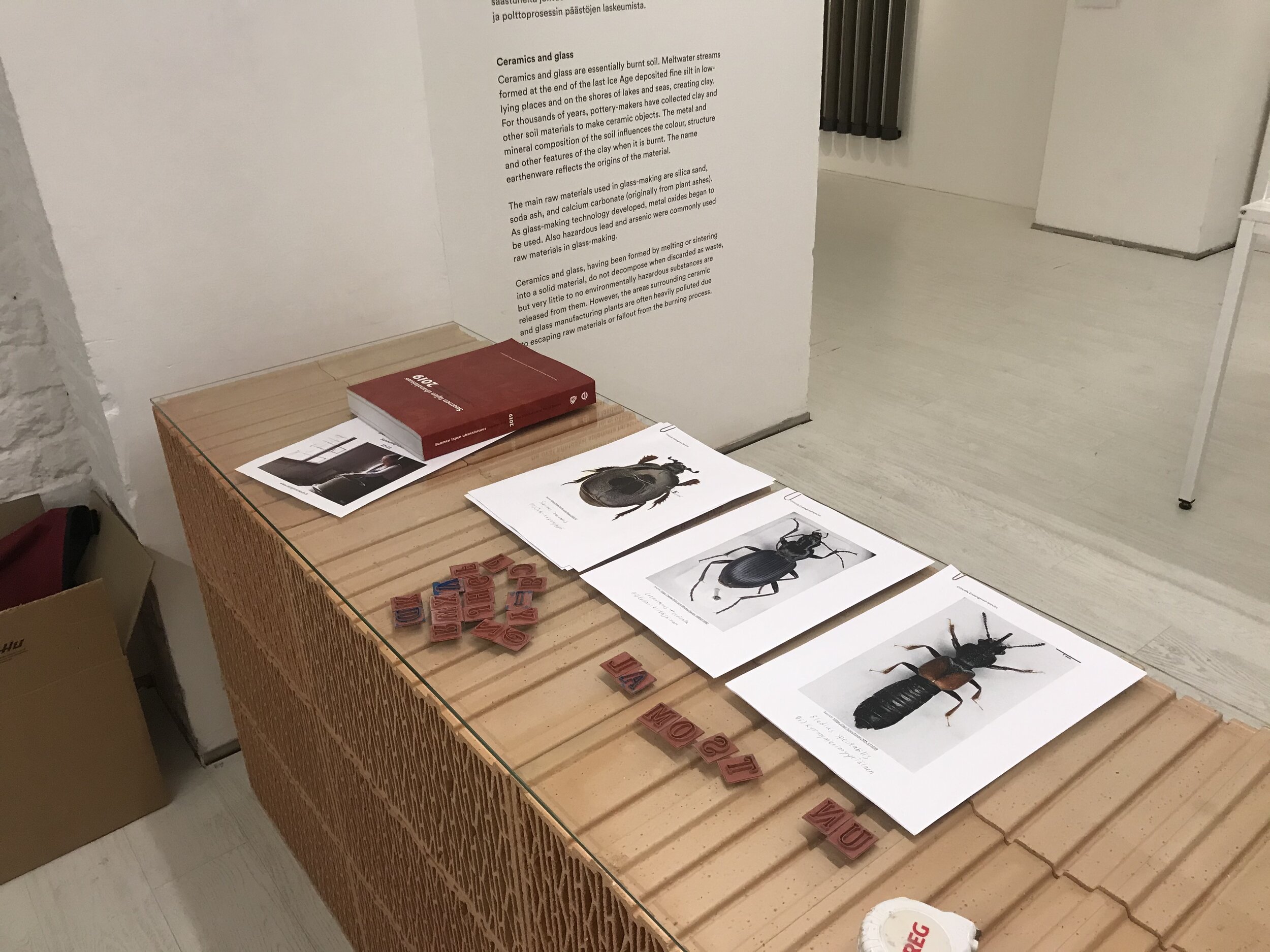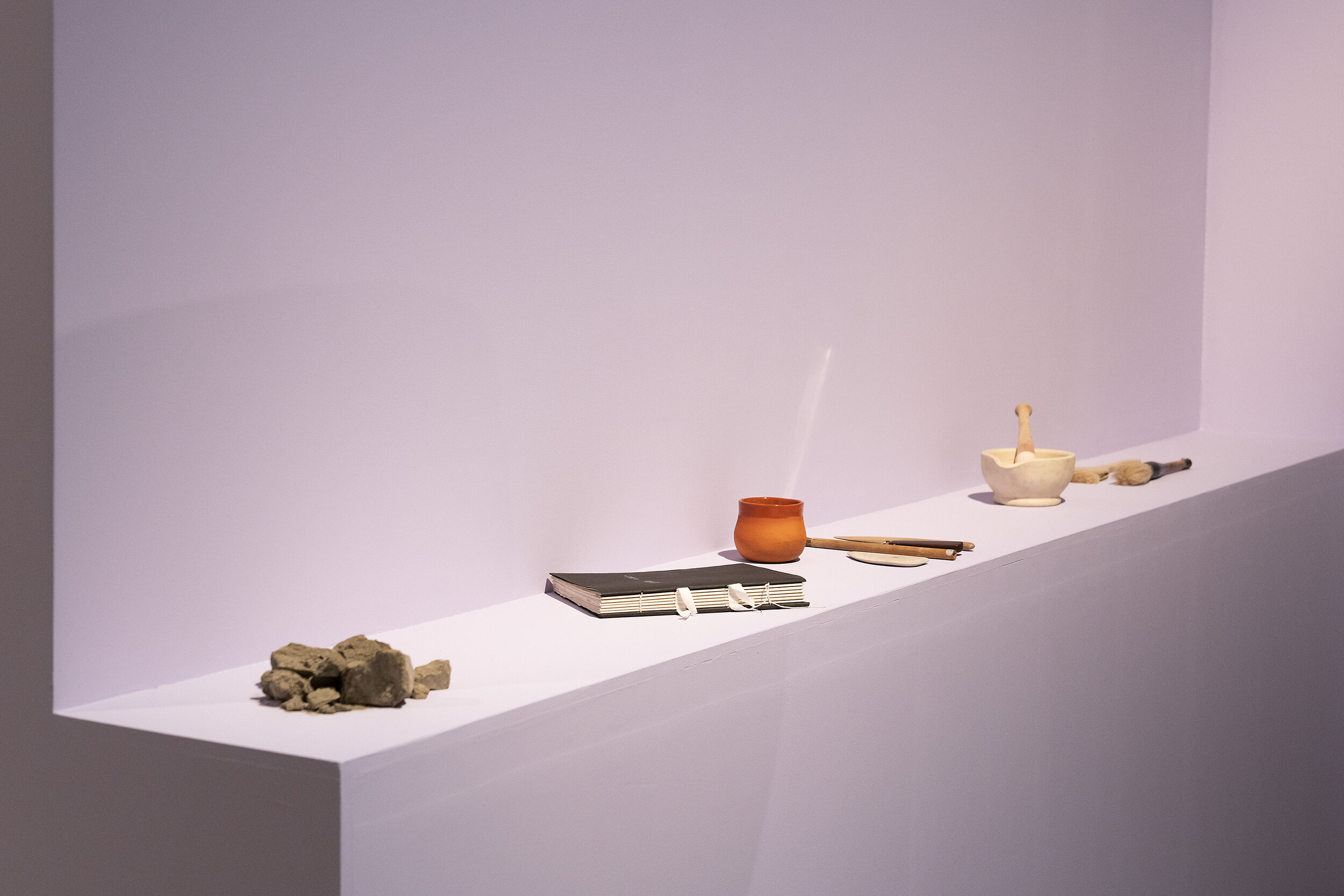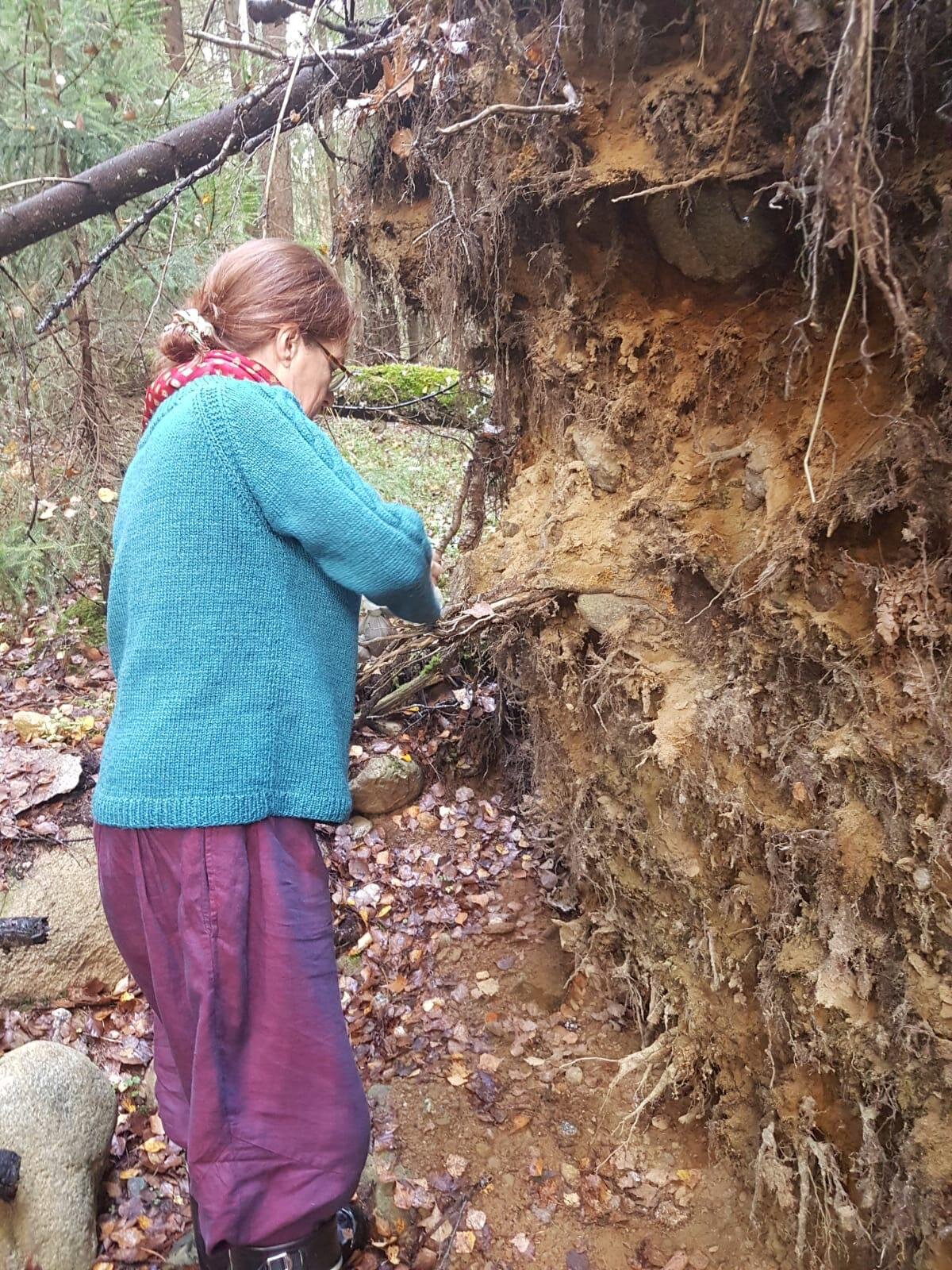EMMA (Espoo Museum of Modern Art) showcases evolving processes and artistic research in a ceramic art exhibition
Ceramics Facing the New presents twelve artists and two artist groups specializing in ceramic art, all of whom use materials and techniques in innovative ways and have an eye for topical themes. Among the selected artists are Empiricans Priska Falin (with ceramic artist Helen Felcey) and Working with Soil group, led by Maarit Mäkelä and Riikka Latva-Somppi. The exhibition is produced in collaboration with Ornamo Art and Design Finland and is based on an open portfolio call.
Ceramics Facing the New at EMMA - Espoo Museum of Modern Art. Photos: Ari Karttunen / EMMA 2021
Curator Laura Kokkonen explains that the underlying thematic concept in the exhibition is kintsugi, the Japanese tradition of mending broken pottery with gold or some other metal. Instead of concealing the damage, the act of kintsugi establishes a new relationship with it. A fracture can be a signal of something new. Themes addressed in the works include ecological disasters and mass extinction, conflicts and their consequences, and transitoriness and loneliness, as well as the vitality of the natural world and connectedness and presence.
Falin & Felcey and the Working with Soil group share the idea of being attentively present and dwelling with the materiality of clay. Their projects highlight the importance of engaging in the creative processes together. Both artist groups present working with clay as a method and an ongoing process, rather than displaying only finished artefacts.
Installation and workshops by Priska Falin & Helen Felcey
The tactile experience of clay as an embodied material is the starting point of the three-part project created by Priska Falin and Helen Felcey. An installation at EMMA entitled Being With invites viewers to experience pebble making within the immersive environments of a video work. The online workshop, Dwelling, provides a series of exercises designed to enhance conscious presence and explore sensory experience, wherever we are. In Pebble Factory open workshops, audiences are invited to explore these unconventional approaches to making with Priska and Helen on site at EMMA.
Screenshot from the video work for the installation Being With. Priska Falin & Helen Felcey, 2021
Being With is an experiential installation that invites viewers to give time to the simple process of forming small clay pebbles within their palms. Pebble making is an example of a process that one can start to dwell within and begin to have a sense of being with material. The installation space is intimate and uncomplicated: on a red tiled floor, raw and fired pebbles surround two seats and a video-work offers a series of immersive environments. The ebb and flow of the river, the stillness of a woodland, the rhythm of the factory process accompanies the participants own experience of the pebble making. It is the act of rolling the clay in the hands and ‘feeling’ the material that forms the pebble moment by moment, as opposed to the will that often directs the act of making.
Being With installation at the Särkyvää exhibition. Image: Priska Falin, 2021
The initial pebbles on show have been shaped by groups of eighth-graders in art classes at Karakallio School in Espoo. The students were invited to take part with two workshops (April and May, 2021) where Falin & Felcey introduced their collaborative work and the research background while engaging with pebble making. Over the course of the exhibition, we invite museum goers to engage with the installation, adding their own pebbles to this evolving space. EMMA museum is organizing special days where clay is available for the exhibition visitors throughout the exhibition.
The online workshop, Dwelling, is designed to support making and connecting, for audiences everywhere. Dwelling guides participants through unconventional approaches to making, which bring focus to our subtle sense perception, involving both our mind and the physicality of the body – a mind-body unity in constant exchange with the living world. The workshop provides guidance for three exercises: Tactility Walks, Pebble Making and Abiding Place. Each exercise brings attention to the senses, personal experiences of the environment, and of the feel of making. The workshop material also provides participants with a series of perspectives to dwell upon: Tactile experience, Material, Physical effort, Environment, Metaphors and poems. Dwelling in making, with the material in our hands, we become aware of the material world that we are a part of. We humans are dependent on the world around us – a world that can live on, far beyond our own existence.
You can take part of this online workshop and please share your experiences! #oleilla
Screenshot from the example video Abiding Place by Helen Felcey, 2021. https://emmamuseum.fi/en/dwelling/
Pebble Factory provides a space for Priska and Helen to work directly with audiences at EMMA. The workshops with eighth-graders in art classes at Karakallio School in Espoo have formed the first Pebble Factory. During autumn 2021, there will be workshops with specific groups, as well as open access opportunities. Pebble Factory will have a ‘factory feel’, with pebble making being the core activity of the factory. Defined ‘pebble stations’ will support groups to engage with perspectives on dwelling, articulated within the online workshop Dwelling.
Making pebbles with feeling the clay between the palms. Image: Priska Falin, 2018
Falin & Felcey’s work traces back to their work with the British Ceramics Biennial where they have run two workshops Embodied Clay and Sensorial Ground as part of the BCB Summer School program in 2018 and 2020. Along with this support for their collaborative work, this work shown now at Espoo EMMA museum has been supported by Emil Aaltonen Foundation, Keramia Oy / Tiileri Oy (FIN), Spode Factory (UK) and EMMA – Espoo Museum of Modern Art.
Working with Soil group continues their work in EMMA
Working with Soil is a group of craft practitioners who use their knowledge in combination with scientific methods to investigate humans’ and soils relations. They invite collaborations from art and design and science to engage in material processes and discussions concerning soil. The results and processes are shared through exhibitions, lectures, discursive events, articles and online platforms. Each exhibition combines material narratives, including finished artefacts and action. The action takes the form of site-specific work, soil research and experiments. Additionally, open studios and workshops open the evolving artistic processes to the audiences.
The Working with Soil group (Özgü Gündeşlioğlu, Catharina Kajander, Riikka Latva-Somppi and Maarit Mäkelä) was established for the project Traces from the Anthropocene: Working with Soil which was presented as ongoing research in the Research Pavilion #3 in the context of the Venice Biennale 2019. The group continued their work in the Soil Laboratory in the exhibition Soil Matters, curated by Mäkelä and Latva-Somppi, in Design Museum Helsinki in 2020-2021.
Making fragile species seen
The work Critically Endangered Species was created in the Soil Laboratory during Soil Matters exhibition. The work aims to raise attention to other-than-human species who are dependent on the wellbeing of the soil.
Critically Endangered Species installed at Ceramics Facing the New exhibition. Photos: Ari Karttunen / EMMA 2021
”Soil communities include plants, insects, mushrooms and microbes, but also humans. As creatures who experience the world through our senses, we tend to value higher other-than-human species, which are large, fast, colourful, cute and visible. This may affect the need to care for and protect small and modest-looking species. Such critically endangered plants and insects are made visible by painting them on large ceramic pots.”
The project follows the “Finnish Red Book” (The 2019 Red List of Finnish species) by the Finnish Environment Institute SYKE on the viability of species in 2019. The book presents 36,604 species, 22,416 of which were identified as currently threatened. Among these endangered species, 489 species have been listed as critically endangered.
According to The Red Book, the decreases of specific species are caused by changes in their habitats. The species selected for the paintings, such as algae, mosses, vernacular plants, insects and lichens, are related in one way or another to land and land use, such as construction or mining activities. Representations of the species were painted, using mainly soil samples from various sites in Finland, on large clay pots which were hand-built from Finnish red earthenware from Somero. Rare and fragile species specimen from Luomus, Finnish Museum of Natural History, are presented side by side with the fired pots.
Critically Endangered Species under process. Photos: Tzuyu Chen, Valeria Azovskaya, Riikka Latva-Somppi
Artists work with local soil during the exhibition
During the exhibition, a new Artistic research project on local Espoo soil by the Working with Soil group begins. The group starts their work by doing a series of walks in the Espoo environment, during which they document and collect materials for their ceramic processes. The materials that are found and processed, and the resulting artefacts will be displayed as the project evolves. The project builds into a crossdisciplinary collaboration within the arts: sound artists Noora Kauppila and Mikko H. Haapoja are invited to share the exploration of the local soil.
Photo: Ari Karttunen / EMMA 2021 — Maarit Mäkelä collecting soil. Photo: Pertti Mäkelä
The two projects merge in the exhibition. In September 2021, ceramic artist Catharina Kajander builds a large clay pot in the exhibition’s studio space. Espoo soil materials are processed to clay slip, and Kajander and Mäkelä will collaboratively paint the pot with them.
The Working with Soil projects are done in collaboration with: Finnish Environment Institute SYKE, Finnish Museum of Natural History LUOMUS, Design Museum Helsinki, designer Tzuyu Chen and sound artists Noora Kauppila and Mikko H. Haapoja.
The Ceramics Facing the New artists are Priska Falin & Helen Felcey, Veera Kulju, Nathalie Lautenbacher, Piia Lieste, Matias Karsikas, Tiia Matikainen, Meri Oivo, Matteo Pennacchio, Maria Punkkinen, Outi Savolainen, Caroline Slotte, Katie Spragg, Irma Weckman and the Working with Soil collective (Özgü Gündeşlioğlu, Catharina Kajander, Riikka Latva-Somppi and Maarit Mäkelä). The 2021 theme at EMMA is the power of art. The craft of ceramics is both an ancient, topical and rapidly evolving technique and a prime example of the enduring power and adaptability of art.
There is an extensive mobile guide to the exhibition.
